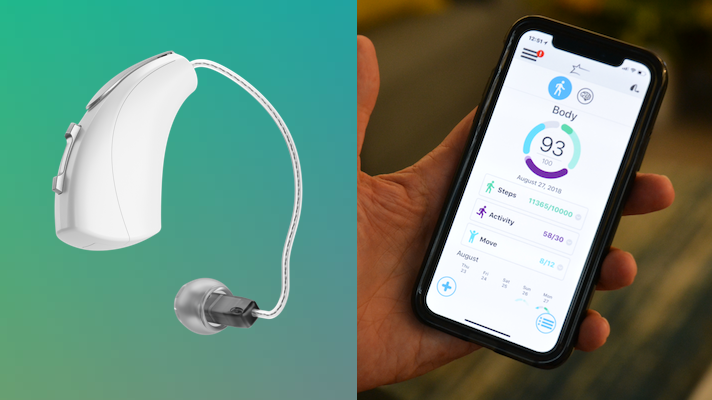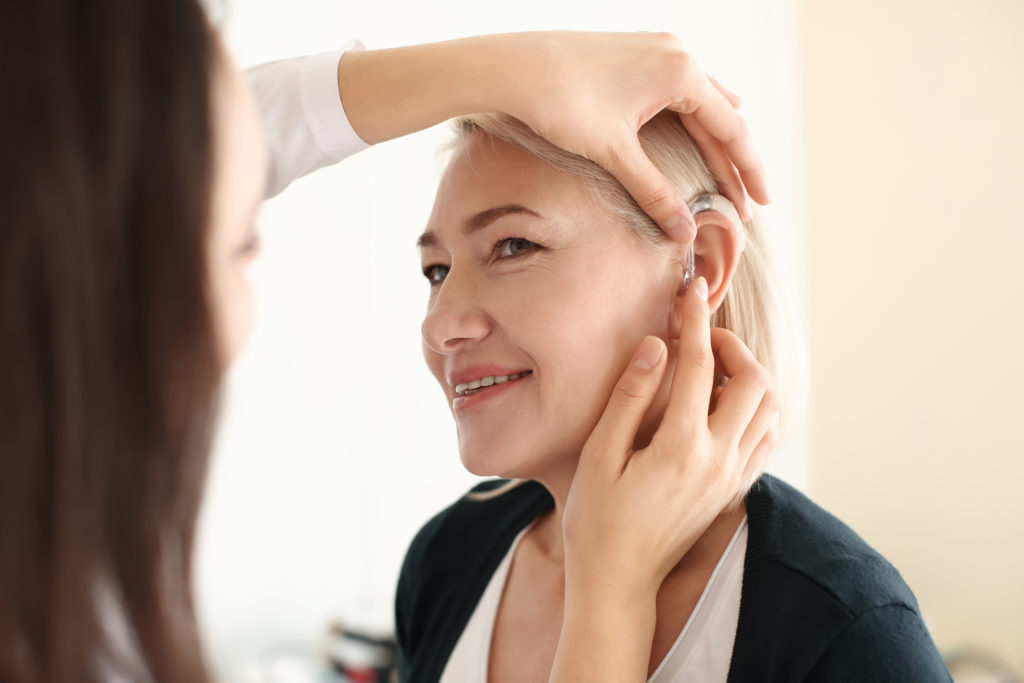By: Shannon Aiello, Au.D.
Telecommuting has suddenly become a necessary job skill for over 2.2 million Washingtonians that not all of us signed up for. But like it or not, with the recent stay at home orders and health concerns, business has embraced telecommuting in attempt to conduct business as close to normal as possible.
For some, telecommuting can be a welcome venture. When else have we been able to have that meeting with the boss without even combing our hair while sporting our pajama’s and perhaps a fashionable cat in lap accessory? However, as we keep venturing down the telecommuting trail, many have found that it is not all its cracked up to be. Acoustically speaking that is.
The ABC’s of Telecommuting Acoustics
For many of us that have experienced video or phone conferences, we are aware of the pros and cons of this medium. Acoustically, there are many obstacles that can interfere with these conversations. Add environmental challenges and even with the best hearing, this can be a challenging format to communicate in.
One of the primary complaints I hear as an Audiologist, a Doctor that specializes in hearing testing and rehabilitation, is how difficult it is to hear on the phone. There are a couple challenges that make phone listening difficult.
First, holding a phone to one ear only allows sound to one side of the acoustic brain. Using two ears, called binaural hearing, significantly increases the ability to understand speech, improves sound quality, helps filter speech from external noise, and improves sound identification and localization.
Additionally, using a phone significantly decreases the amount of acoustic stimulus versus an in- person conversation. Many phones, especially cellphones, omit some of the high frequency sounds that are critical for speech understanding. The range of normal hearing in humans spans from 20 Hz to 20,000Hz, with most of the important speech information falling between 250Hz and 4000Hz. There are some very important ultrahigh frequency sounds above 4,000Hz that are critical for speech understanding. However, many phones only transmit sounds between 250Hz and 3,500Hz, which cuts off some of the important high frequency sounds for clear speech understanding.
Cellphones finally have their own set of difficulties. Connections can be intermittent, disconnections can happen at inopportune times, and a poor acoustic output compared to a traditional landline can lead to extreme communication breakdowns. Despite the drawbacks, mobile devices now make up more that 55% of the telephone market, with landlines only being available in approximately 42% of homes. So, the chances of having a cellphone involved is extremely high compared to five years ago.
Have a Headache? It Could Be More that the Meeting Topic….
Based on the above information, it’s easy to see some of the obstacles that telecommuting poses compared to in person conversation. However, the above information is compounded if any amount of hearing loss is present.
With hearing loss, people typically start noticing issues with clarity and understanding, especially in poor acoustic situations such as a group or on the phone. Untreated hearing loss, even if it is minimal, puts additional strain on other parts of the brain in order to understand the spoken message. For example, if someone misses what was said, they naturally start thinking about what they though might have been said, what sounds like what they thought they heard, if what they think they hear makes sense given the conversation topic ect. This mental processing takes place in a split second, and results in having to catch up in the conversation and start the cycle all over again.
Sounds exhausting doesn’t it? Well it is. These mini-conversations continue non-stop throughout the day and the end result is an increase in fatigue, stress headaches, and mental/physical exhaustion after a day of conversation.
It is easier to cover this up during in-person conversations. Visual cues such as papers may be available. Additionally, watching the speaker’s facial expressions and body language offers lots of information about the topic. But take those away during a phone conference and even minimal hearing loss could leave an impact.
3 Steps for Telecommuting Success
Now that we understand WHY telecommuting can leave us exhausted, here are three simple tips for telecommuting success
First, change your input. It might not always be easy to change the format of a meeting, however if it is possible to set the meeting up via zoom or videoconferencing so facial cues can be utilized, ask for it. Also, whenever possible use a landline as it has a more robust acoustic signal versus a cellphone. Or even better, use a landline on speaker phone which will provide binaural hearing and a more complete auditory signal to the brain.
Second, acoustically optimize your surroundings. Again, our brains have a harder time deciphering information with minimal hearing loss with acoustically difficult surroundings. Competing background noise, such the television, radio, and conversations can be very difficult to hear over even with normal hearing. Also think of other softer background noises that can be distracting such as a HVAC system, road noise, a washing machine, water running. Any of these smaller sounds can make it more difficult to process the limited signal a phone offers and can lead to misinterpretation.
Third, speak up and be proactive about your hearing. This is where WE need to take responsibility and be proactive about our hearing abilities. Hearing should be checked annually, just like teeth and eyes. Lots of research touts the benefits of treating hearing loss early, including the benefit of being fully able to engage in work conferences! Get hearing checked and get it treated sooner than later.
Bonus: Navigating Telecommuting with a Hearing Loss
As indicated above, telecommuting can present many other difficulties for employees with hearing loss. Here are a few tips and tricks to help get through this telecommuting time if you have a hearing loss and/or use hearing aids:
- Use captions. There are FREE landline phones such as CapTel and Caption Call that are free to those with documented hearing loss, that caption the conversation as it takes place. A Doctor of Audiology that has your hearing test on record can enroll you for these services at any time. For cellphones, try the app InnoCaption or Live Caption to caption your cell phone conversation and provide you supporting visual information.
- Use Bluetooth enabled hearing aids. The hearing aids available today almost all come with the capability to be Bluetooth compatible with your mobile devices. This means the listener will hear a robust, signal to both ears when using this feature. Additionally, the microphones on the hearing aids can be turned off so that all the user hears is the conversation. Telecommuting would be the perfect application for this feature.
- Advocate for yourself. Let the person running the meeting know ahead of time that you have a hearing loss and see if there is anyway to get a visual copy of the presentation, such as an outline, or powerpoint, so you can be familiar with the topics and agenda. This will help with the “fill in the blank” game that mentally happens if part of the message is missed. Also, let the participants know ahead of time that you have a hearing loss. Ask them politely to speak clearly at a slower pace for full understanding.
- Done ask What. ‘What’ or ‘huh’ are frustrating phrases when used in repetition and can give the illusion that you are not paying attention to the conversation, instead of not hearing the conversation. A better alternative is rephrasing what was said for clarity. For example, instead of asking “what” after a co-worker describes a process, say “I understand what you said about the delivery of the product, but can you clarify for me what happens after it is dropped off?” This illustrates that you are following the conversation and are actively trying to understand the message.
- Optimize your hearing technology. There is no one size fits all approach to hearing aids, however every hearing aid needs routine cleaning and adjustments to make sure it is functioning optimally and improving your hearing. Having your hearing checked annually and hearing technology adjusted at that time ensures best function of hearing devices. Additionally, have them cleaned 2-3 times a year professionally. Hearing aids are an investment so make sure the facility you are working with is proactive about your hearing care.
This is a stressful time on everyone. Hearing doesn’t have to be something that adds to your stress. If you are a hearing aid user, Columbia Basin Hearing Center is open to curbside appointments for adjustments or cleanings of hearing devices which are critical to improving hearing during this time. And if you haven’t had your hearing tested, and are getting headaches from all day telecommuting meetings, just know that we offer free screenings to establish your hearing baseline and guide you on your better hearing journey.
Stay safe and remember CBHC is HEAR for you.
About the author:
Dr. Shannon Aiello is Doctor of Audiology and co-owner of Columbia Basin Hearing Center. She is a fellow of the American Academy of Audiology and specializes in diagnostic and rehabilitative audiology with an emphasis in geriatrics and tinnitus management.She loves the challenge of an ever-changing business industry in combination with CBHC’s commitment to providing the highest level of patient care for their patients. Her formal training in communications combined with her interactions with patients, staff, and high-level business associates have evolved her into the communication guru and community leader that she is today.
Dr. Shannon loves spending time with her family and children. She is often involved with a multitude of local non-profits and is the founder of the Abundant Health Alliance.





